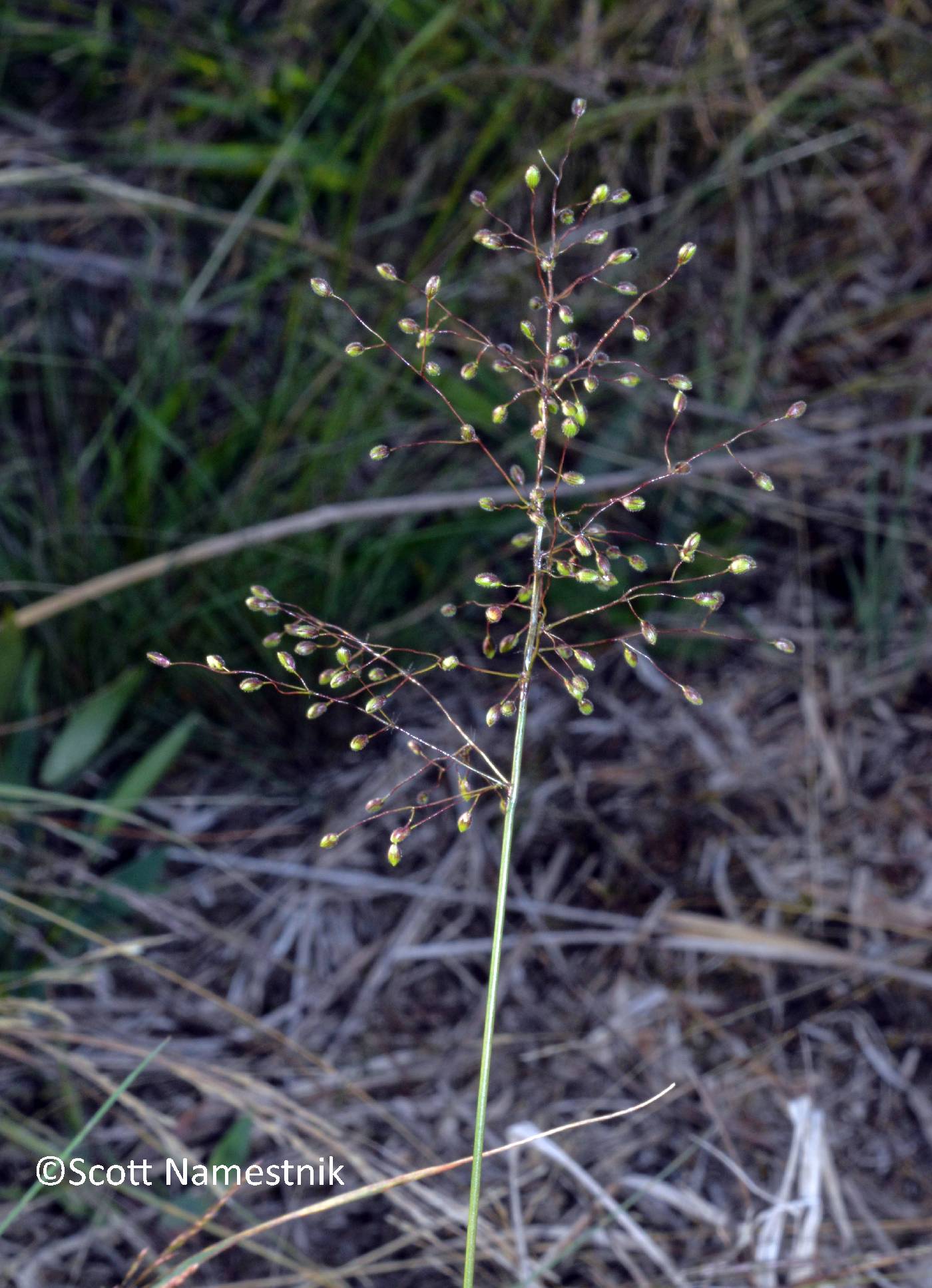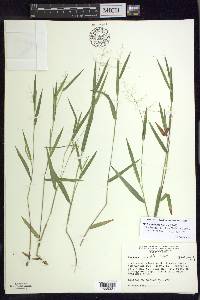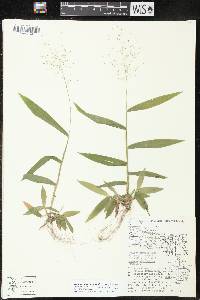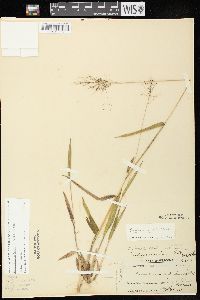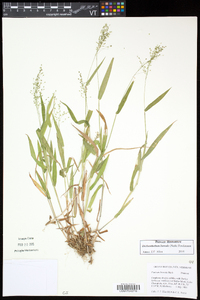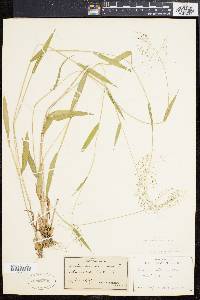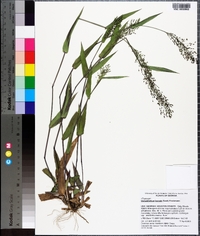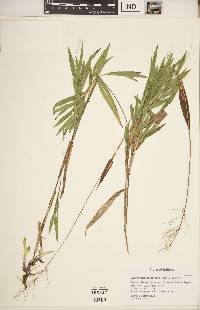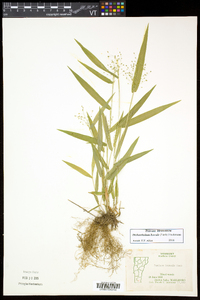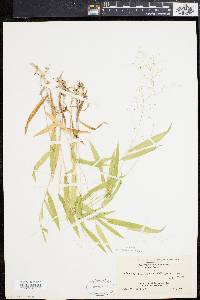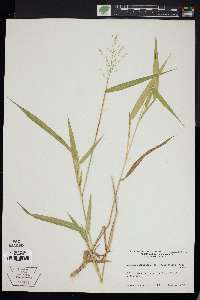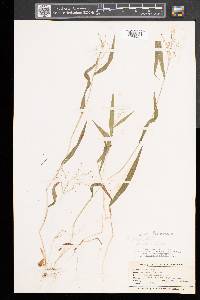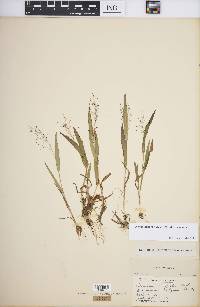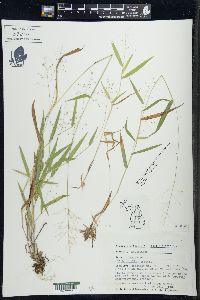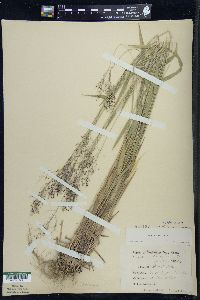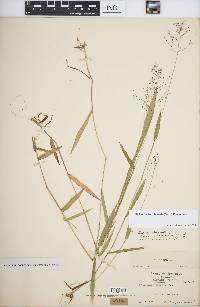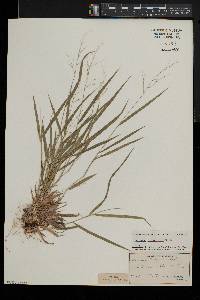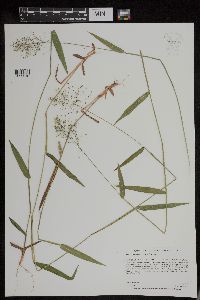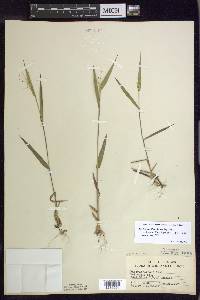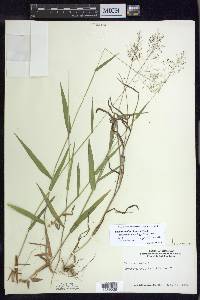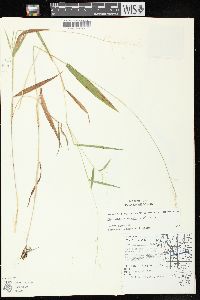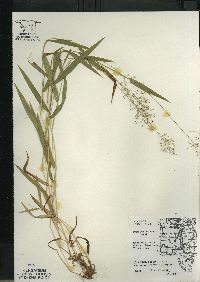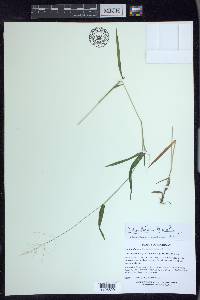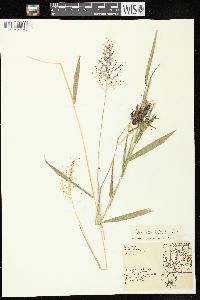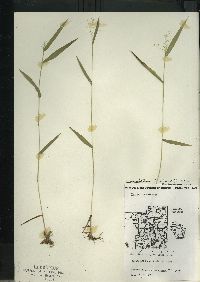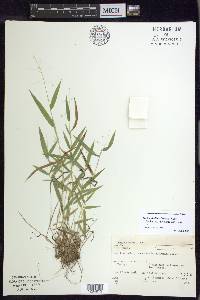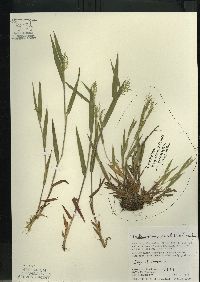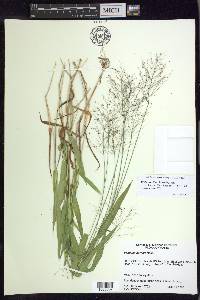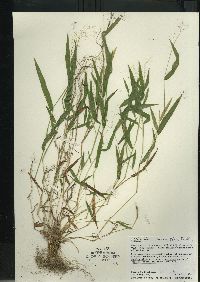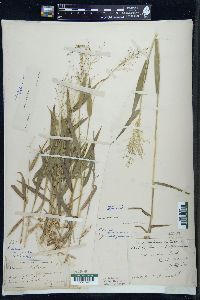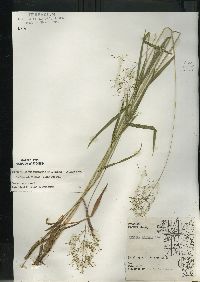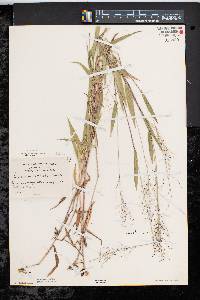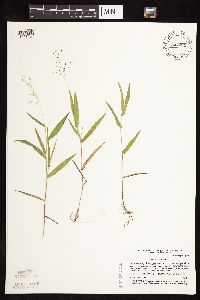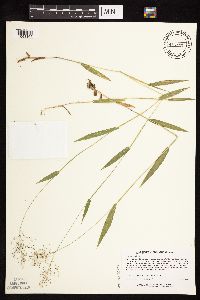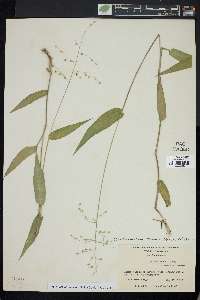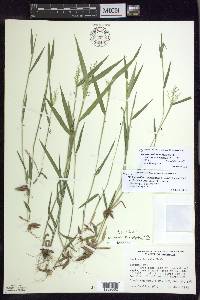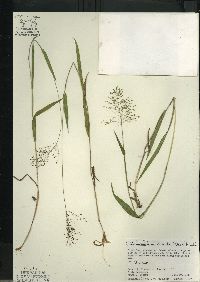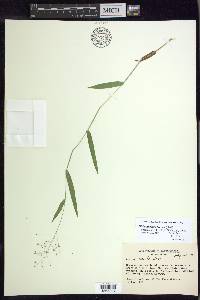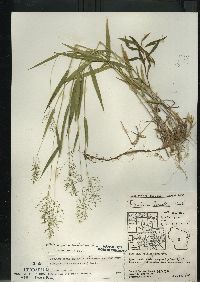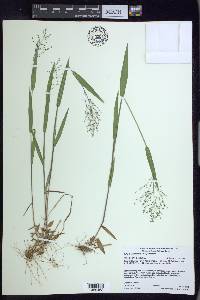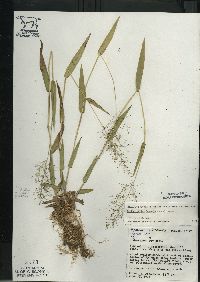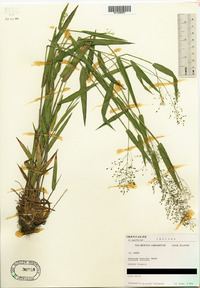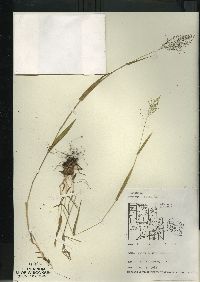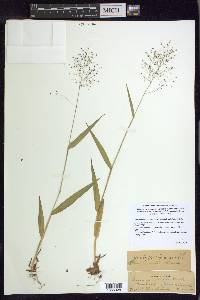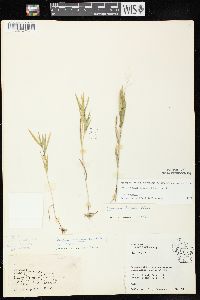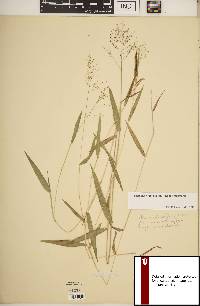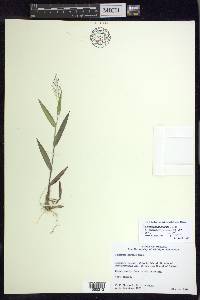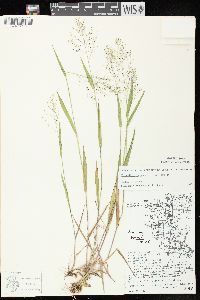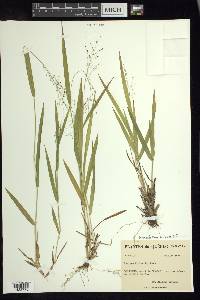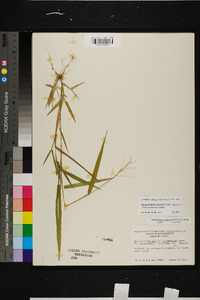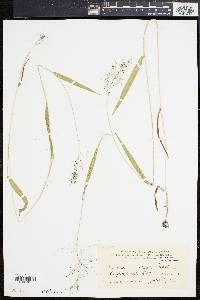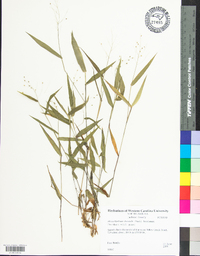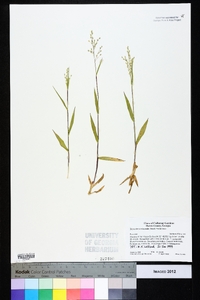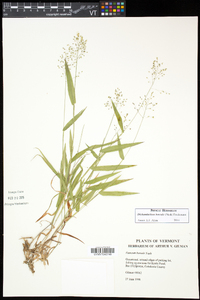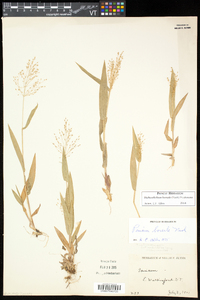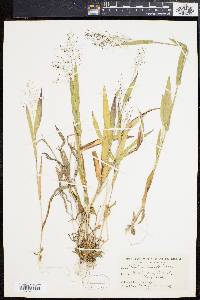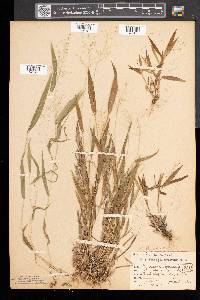
|
|
|
|
Family: Poaceae
Northern Witch Grass, more...northern panicgrass, panic boreal
[Panicum bicknellii var. calliphyllum (Ashe) Gleason] |
Plants cespitose. Basal rosettes well-differentiated; blades 2-4 cm, pubescent, reddish. Culms 18-75 cm, usually more than 1 mm thick, occasionally delicate, erect or ascending; nodes glabrous; internodes glabrous; fall phase with decumbent culms, branches arising from the lower and midculm nodes, rebranching 2-3 times, with small blades and secondary panicles compared to those on the culms, secondary panicles with 8-10 spikelets, partially included at maturity. Cauline leaves 3-5; sheaths shorter than the internodes, lower sheaths pubescent, upper sheaths glabrous, margins of all sheaths sparsely ciliate; ligules about 0.5 mm, of hairs; blades 5-11 cm long, 5-13 mm wide, thin, spreading to erect, usually glabrous, rarely pubescent abaxially, always glabrous adaxially, bases truncate to cordate, ciliate on the margins, blades of the flag leaves erect or ascending. Primary panicles 5-11 cm long, 3-8 cm wide, ovoid, long-exserted, with 40-220 spikelets. Spikelets 2-2.2 mm long, 0.8-1.3 mm wide, ellipsoid, usually reddish, shortly pubescent, subacute. Lower glumes 0.5-1 mm, triangular-ovate; lower florets sterile; upper florets slightly exceeding the upper glumes and lower lemmas, subacute. 2n = 18. Dichanthelium boreale grows inopen woodlands and thickets, wet meadows, and fields within the Flora region. The primary panicles are mostly open-pollinated and are produced in May and June; the secondary panicles are predominantly cleistogamous and are produced from mid-June into October. Dichanthelium boreale occasionally hybridizes with D. acuminatum and D. xanthophysum, producing a sterile triploid sometimes called Panicum calliphyllum Ashe. Perennial herb, tufted 18 cm - 0.75 m tall Inflorescence: a terminal, branched arrangement of spikelets (panicle). Primary panicles atop the culms, 5 - 11 cm long, 3 - 8 cm wide, egg-shaped, long-exserted, with 40 to over 200 spikelets. Secondary panicles (fall phase) atop the branches, with eight to ten spikelets. Fruit: a caryopsis, indehiscent, enclosed within the persistent lemma and palea. Culm: upright or ascending, 18 cm - 0.75 m long, over 1 mm thick, round in cross-section, hollow. Fall phase with decumbent culms, much-branched, with leaf blades and secondary panicles that are smaller than those of the culms. Spikelets: reddish, about 2 mm long and 1 mm wide, ellipsoid with a nearly pointed apex, shortly hairy. Basal leaves: in a rosette. Blades reddish, 2 - 4 cm long, shortly egg-shaped to lance-shaped, hairy, distinct from the stem blades. Stem leaves: three to five, alternate, two-ranked. Sheaths shorter than internodes, hairless (upper) to hairy (lower), sparsely fringed. Ligules about 0.5 mm long, composed of hairs. Blades thin, spreading to upright, distinctly longer and narrower than basal leaves, 5 - 11 cm long, 5 - 13 mm wide, lance-shaped with a flat to heart-shaped base, parallel-veined, fringed. Glumes:: Lower glumes 0.5 - 1 mm long, triangular to egg-shaped. Upper glumes rounded to pointed at the apex. Lemmas:: Lower lemmas similar to upper glumes. Upper lemmas longitudinally lined, shiny, with rolled-up margins above. Paleas:: Lower paleas shorter than lower lemmas, thin. Upper paleas longitudinally lined. Florets:: Lower florets sterile. Upper florets bisexual, stalkless, slightly longer than upper glumes and lower lemmas, nearly pointed, plump. Anthers three. Stigmas red. Similar species: No information at this time. Flowering: June to late August Habitat and ecology: Local in wet prairies. Occurence in the Chicago region: native Etymology: Dichanthelium comes from the Greek words di, meaning twice, and anth, meaning flowering, referring to plants that may have two flowering periods. Boreale means "from the North." Author: The Morton Arboretum From Flora of Indiana (1940) by Charles C. Deam A rare grass of marshes in the lake area. It is also occasionally found in the mucky borders of ponds and lakes. ...... Indiana Coefficient of Conservatism: C = 10 Wetland Indicator Status: FAC |

